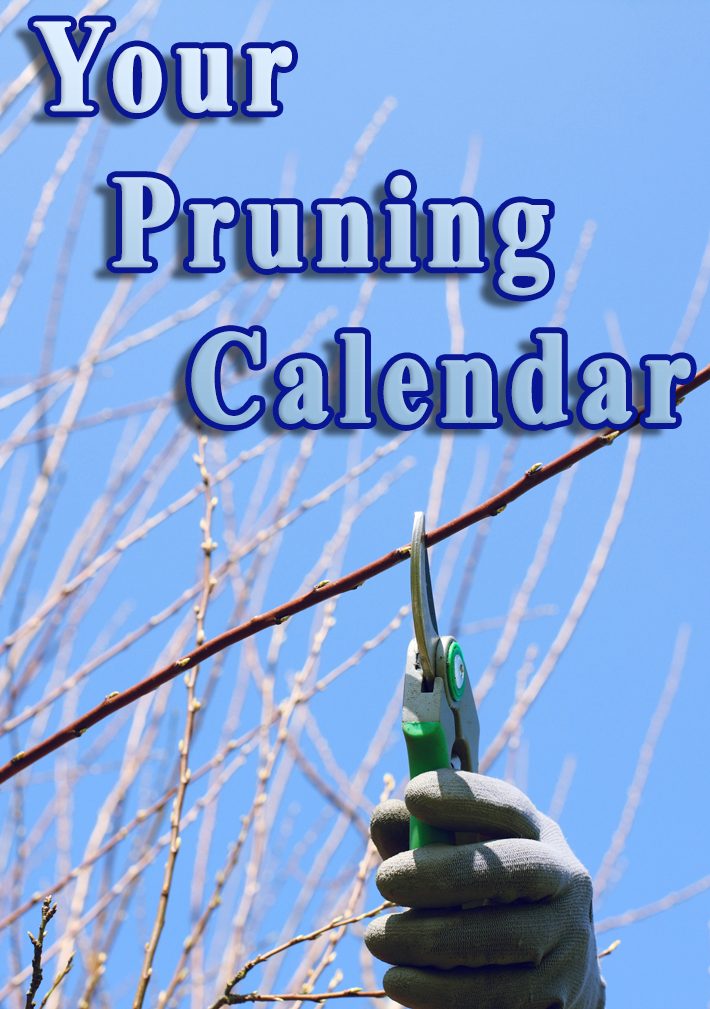
Your Pruning Calendar
Here’s a cheat-sheet on when to prune your trees and shrubs to keep them healthy for decades to come.
Fall Pruning
With exposed branches and a crisp October sun shining, reaching for those pruners is often tempting. It’s better to take a deep breath and focus on other chores.
Pruning deciduous or fruit trees in Fall may, with some warm subsequent days, induces new growth to sprout forth. After all the resources the tree invests into this growth, losing it to winter’s chill could deal damage to its overall health.
Elm trees are an exception to the rule. While Dutch Elm disease ravages many North American cities, the Edmonton area proudly has one of the largest uninfected populations in the world.
In the Capital region, it’s only legal to prune Elm between Oct 1 and March 31. The Elm Bark beetle, which carries the disease, stalks these lands and would gladly infect our Elms through an ill-timed open wound. Dutch Elm is so insidious that this could be disastrous to our urban forest.
Late Winter
It’s good practice to prune many deciduous trees, including fruit trees, in late March or early April. Cutting them in late spring or summer, while their sap is running, creates an open wound that, as in humans, takes a long time to heal and rolls out the red carpet for diseases like fireblight.
Although spring blooming trees, like apples and cherries, flower on previous year’s wood, fruit tree pruning is important to open the tree up for more fruit production in the long run. The few dormant flowers cut off are well worth the increase in fruit production you’ll enjoy in the years ahead.
Summer flowering shrubs, like Potentilla, set their buds in the spring. Pruning these in late winter will promote branching and lead to a thicker shrub without sacrificing flowers.
Non-flowering shrubs can be pruned anytime except in the Fall, for the same reason as the fruit trees.
Spring
The spring blooming shrubs we so adore typically bloom on last year’s wood. This means that lilacs, forsythia, and rhododendrons all set bud the summer before they bloom. To avoid losing a year’s colour, trim these shrubs immediately after they bloom (ie. before they set bud for the next spring).
Some people choose to prune birch and maple in the spring, rather than late winter, to prevent them “bleeding.” This oozing from the wounds is harmless, but if you want to avoid it prune in late spring once the leaves are fully opened. Never remove more than a quarter of a tree’s open leaves.

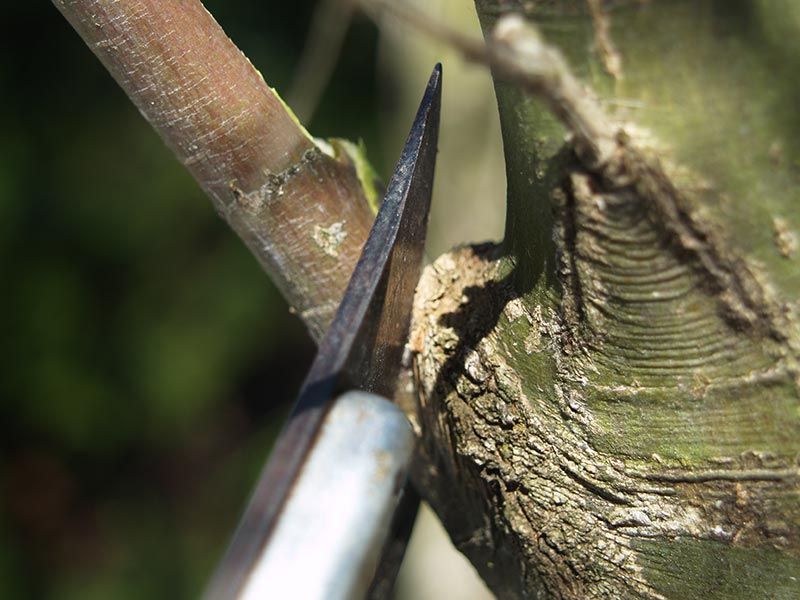
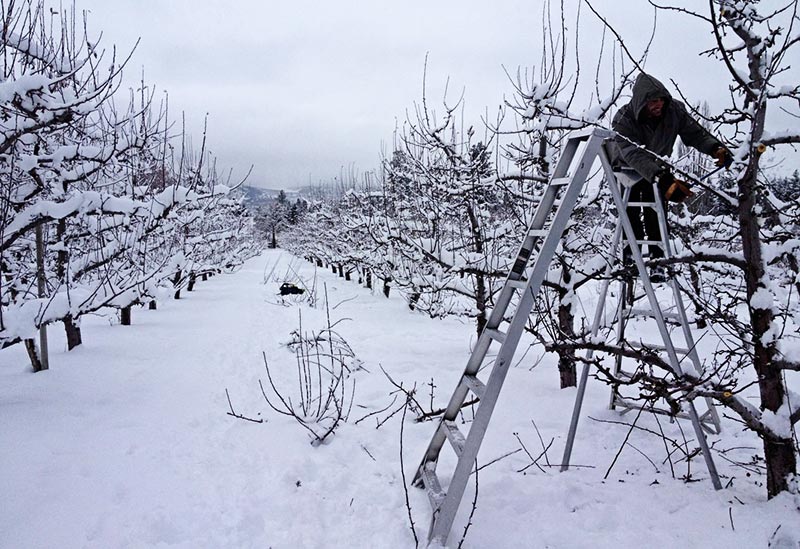

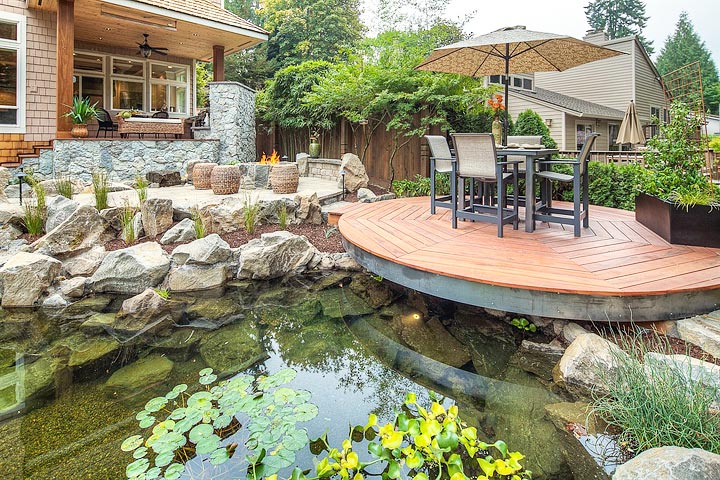
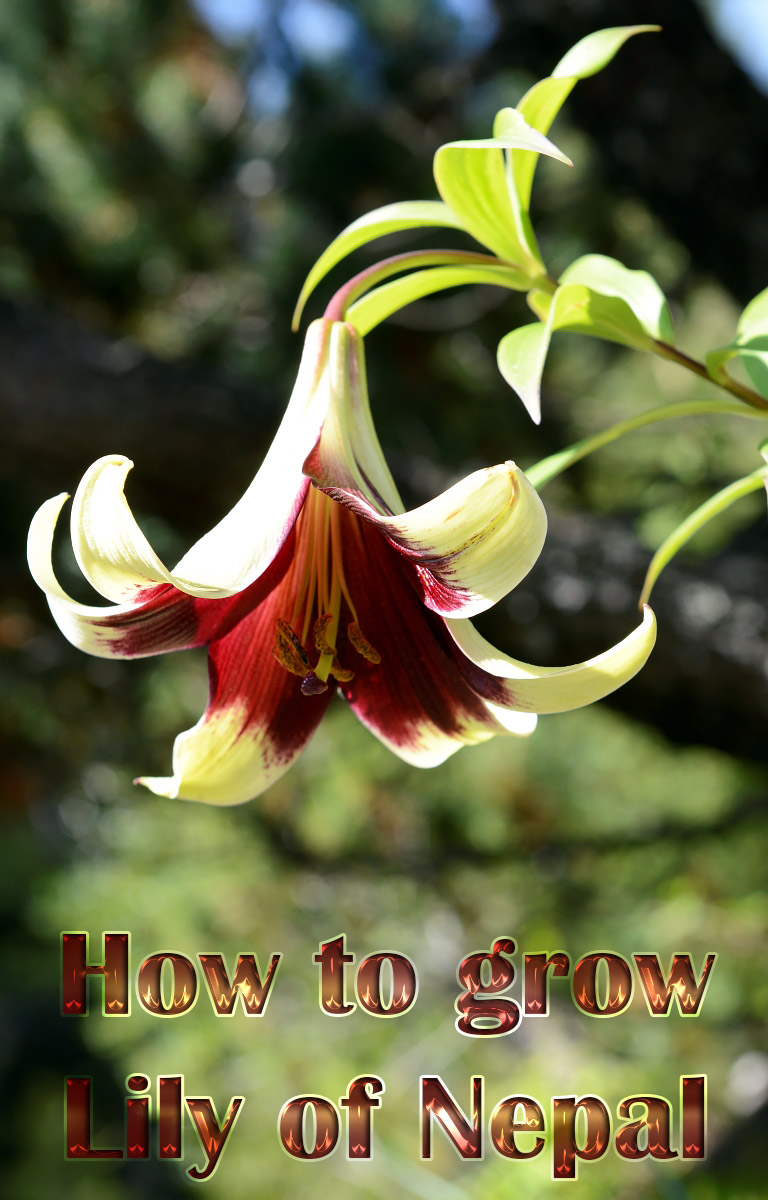
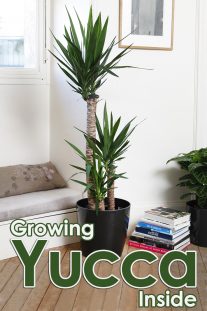
Leave a Reply